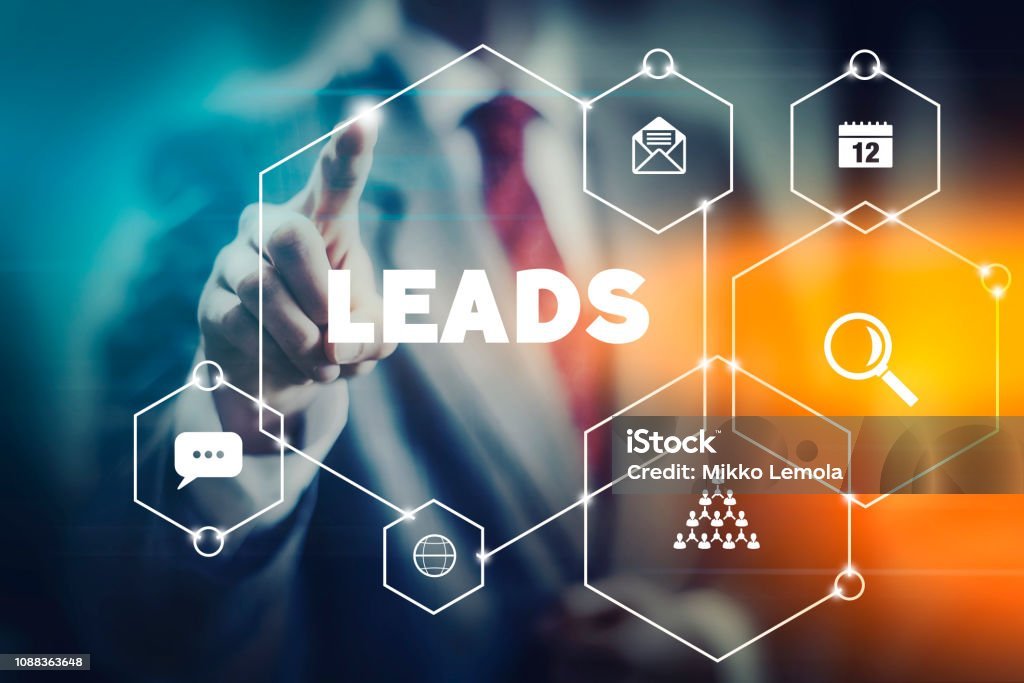Learn how verified B2B lead generation, high-quality data, and sales tools drive targeted prospecting, improved conversions, and optimized sales performance.
Definitive Guide to B2B Lead Generation
In today’s competitive business landscape, the success of any B2B company hinges on one critical process: B2B lead generation. Whether you are a startup trying to build your first sales pipeline or an established enterprise aiming to optimize your outreach, understanding the nuances of lead generation can be the difference between steady growth and stagnation.
This guide dives deep into verified B2B lead generation, the role of high-quality B2B data, and the tools and strategies modern sales teams use to enhance performance and drive results.
What is B2B Lead Generation?
B2B lead generation is the process of identifying, attracting, and converting potential business customers into leads that can be nurtured through a sales funnel. Unlike B2C, where decisions are often impulsive or emotional, B2B purchases are complex, involve multiple stakeholders, and require longer decision-making cycles.
The B2B lead generation process typically involves:
- Target audience identification – defining industries, company sizes, and decision-makers that fit your Ideal Customer Profile (ICP).
- Prospecting – sourcing potential leads through channels such as LinkedIn, cold email, events, and content marketing.
- Lead qualification – evaluating whether the contact has the authority, need, and budget to purchase.
- Nurturing and conversion – guiding prospects through a personalized, value-driven sales process until they become customers.
Why B2B Lead Generation is Crucial
High-quality B2B lead generation solutions ensure a consistent flow of prospects into the sales pipeline, which:
- Reduces time wasted on unqualified contacts.
- Increases conversion rates through targeted outreach.
- Improves ROI on marketing and sales campaigns.
- Supports sustainable business growth.
Without a strong lead generation strategy, even the best sales teams can struggle to meet quotas, resulting in slower revenue growth and higher customer acquisition costs.
Components of Effective B2B Lead Generation
To excel in B2B lead generation, companies must focus on several key components:
1. High-Quality B2B Data
The foundation of successful lead generation is high-quality B2B data. Bad or outdated data leads to wasted effort, low engagement rates, and missed opportunities. Reliable B2B data ensures that sales teams are reaching real decision-makers who are relevant to the business.
2. B2B Data Enrichment
Basic contact information is rarely sufficient. B2B data enrichment adds valuable context such as:
- Job titles and seniority levels
- Company size, revenue, and industry
- Technology stack and software usage
- Geographic location and contact preferences
This enriched data allows sales teams to personalize outreach and prioritize leads based on likelihood to convert.
3. B2B Lead Generation Software
Manual lead prospecting is time-consuming and prone to error. Modern B2B lead generation software automates the process of discovering leads, verifying their information, and segmenting them based on criteria that match your ICP. Key features often include:
- AI-powered lead scoring
- Automated list building
- CRM integration
- Real-time contact verification
4. B2B Sales Tools
Generating leads is only half the battle. B2B sales tools help teams manage, track, and engage leads efficiently. These tools include:
- Customer Relationship Management (CRM) systems
- Email outreach and automation platforms
- Sales intelligence and analytics software
- Reporting and performance dashboards
The Role of Verified B2B Lead Generation
One of the biggest challenges in B2B sales is data accuracy. Studies suggest that up to 30% of B2B contact information becomes outdated annually due to job changes, company restructuring, and new hiring. This is where verified B2B lead generation becomes essential.
Verification ensures that:
- Contacts are accurate and active
- Leads match your ICP
- Outreach campaigns are more effective
- Sales cycles shorten due to precise targeting
Providers like ListKit use a triple-verification process, combining AI, manual validation, and real-time updates, so your sales team works only with actionable leads.
Strategies for Modern B2B Lead Generation
Here are proven strategies to maximize B2B lead generation efforts:
1. Outbound Prospecting
- Personalized cold emails
- LinkedIn direct messaging campaigns
- Strategic calling and follow-ups
2. Inbound Marketing
- SEO-optimized content marketing
- Whitepapers, eBooks, and case studies
- Webinars and virtual events to attract prospects
3. Account-Based Marketing (ABM)
- Tailored campaigns targeting high-value accounts
- Coordinated efforts between marketing and sales teams
- Use of enriched data to engage multiple stakeholders within the same company
4. Leveraging B2B Data Enrichment
- Identifying buying signals and intent data
- Segmenting leads for higher relevance
- Prioritizing high-quality prospects over quantity
5. Automation & AI
- Scaling outreach without losing personalization
- AI-driven lead scoring for prioritization
- Automation of repetitive tasks such as follow-up reminders
Metrics to Measure Lead Generation Success
Monitoring the effectiveness of B2B lead generation efforts is critical. Key metrics include:
- Lead quality – percentage of leads that fit the ICP
- Conversion rate – percentage of leads turning into opportunities or deals
- Cost per lead (CPL) – efficiency of your acquisition campaigns
- Return on investment (ROI) – profitability of lead generation activities
- Sales velocity – speed at which leads progress through the sales funnel
Tracking these metrics ensures continuous improvement and ROI optimization.
Future Trends in B2B Lead Generation
The B2B landscape continues to evolve, and modern companies must adapt to new trends:
- AI-powered personalization – using enriched data to create hyper-targeted campaigns
- Privacy-first prospecting – ensuring compliance with GDPR, CCPA, and other regulations
- Unified sales intelligence platforms – integrating lead generation, enrichment, and outreach in one ecosystem
- Predictive analytics – forecasting which leads are most likely to convert based on historical and behavioral data
Why Choose ListKit for B2B Lead Generation
ListKit offers high-quality, triple-verified B2B leads combined with powerful B2B sales tools and lead generation software. With ListKit, companies can:
- Access verified, enriched data for precise targeting
- Automate lead discovery and scoring
- Streamline sales workflows with integrated tools
- Increase conversion rates with actionable insights
By leveraging verified B2B lead generation solutions, sales teams can focus on building relationships with qualified prospects instead of wasting time on unverified leads.
Final Thoughts
B2B lead generation is the backbone of any successful sales strategy. Companies that invest in high-quality B2B data, B2B data enrichment, and modern sales tools gain a competitive advantage by generating predictable, qualified leads.
Verified B2B lead generation ensures accuracy, relevance, and efficiency, allowing sales teams to focus on closing deals rather than chasing outdated contacts. Platforms like ListKit not only provide leads—they provide intelligence, automation, and actionable insights to help businesses grow faster and smarter.
In short, mastering B2B lead generation today means combining strategy, data, and technology to create a scalable, high-performing sales engine.

Jennifer Marshall is a friendly and talented journalist who loves telling stories. She is an expert in writing biographies that make people’s lives shine. With clear and simple words, Jennifer creates engaging stories that everyone can enjoy. With 9 years of experience, her passion for writing helps her connect with readers and share inspiring tales.
